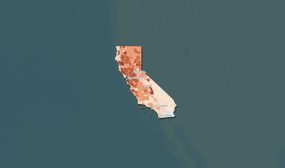New policy pushes for open source in California agencies

Editor’s Note: A previous version of this story stated that all agency projects were required to be open source. The article was updated shortly after publication to reflect that non-open-source software is still permitted under the new policy.
If implemented well, new policy in California could soon generate and catalog rafts of open source software that agencies can adapt and reuse to reduce IT project costs.
The California Department of Technology released a letter this week announcing a new policy — called the Open Source and Code Reuse Policy — elevating the use of open source software across state government. Agencies and state entities are asked to develop, purchase or reuse open source software — anything with source code that is publicly available to view, adapt, or reuse — for new IT projects as a first option where it is financially viable. (There are a few exceptions , such as cases that would threaten national or state security.)
The policy is also applied retroactively to existing state-built software, requiring agencies to make such code “broadly available for reuse across state government in a consistent manner.” The policy notes that reusing custom-developed code across state agencies “can have significant benefits for taxpayers, including decreasing duplicative costs” and is intended to “promote innovation and collaboration across state government.”
Non-open-source software will still be permitted — an official from the California Department of Technology assured StateScoop that the state wants to keep the door open for its vendor partners, but emphasized that open source has value that warrants strong consideration by agencies.
In addition to procedural requirements, like integrating open source software consideration into IT lifecycles, the policy also requires the creation of a new online repository — now at code.ca.gov — where any appropriate code will be posted.
Historically, the success of government code sharing programs has been contingent on the ability of organizers to ensure the content of their repositories is both useful and accessible, said Deborah Bryant, board director emeritus at the Open Source Initiative, a nonprofit advocacy group. She said some of the federal government’s early efforts have been hampered by a “walled garden” approach to code sharing that limited program reach and impact.
“If it’s done properly — if there’s enough transparency, if people can get to it easily and it’s indexed and people understand what’s there and it’s discoverable — it does promise the benefit of people not creating the same code twice,” Bryant said.
Several efforts to expand the movement over the years have included a repository launched in the mid-1990s that wasn’t explicitly open source but was designed to encourage code sharing; the Government Open Code Collaborative, a program launched in 2004 as a collaboration between nonprofit academic entities and the government to share code sharing best practices; and the Department of Defense’s Forge.mil .
Under President Barack Obama, the White House Office of Management and Budget Federal Source Code Policy set a standard for government code reuse in 2016 with the release of a Federal Source Code policy that accompanied a pilot project requiring agencies to submit at least 20 percent of newly-developed custom code as open source.
In California’s case, there’s a lot of code to be standardized and shared. The key, Bryant said, will be to prioritize the right projects to include first or risk creating a bad reputation for the repository that could put the policy’s adoption at risk.
“If you just start piling up years of code, you can end up with something like Sourceforge,” Bryant said, referring to the free online repository, “where you have lots of viable, good projects, but it’s also littered with the carcasses of thousands of projects people have abandoned.”
California’s policy is a “fantastic starting point,” but only a starting point, she said — ultimately, it will be implementation that will determine whether the state can be successful in its goals of reducing costs and spurring collaboration.






